If there’s one place where students should expect to be safe, it’s on school grounds. However, every year thousands of children wind up in the emergency room for accidents that occurred at school. As many as 25% of all accidental injuries suffered by children 14 and younger occur in or around their school.
In many cases, these injuries could have been avoided if the schools had been more diligent. If your student has suffered a brain or spine injury due to the school’s negligence, you may be able to hold them accountable. Here’s what you need to know about school liability for student injuries and how parents can stand up to negligent school districts.
What Duties Do Schools Owe Their Students?
School districts are responsible for the safety of their students when on campus and during school-sponsored activities. In a recent California Court of Appeals decision, the court clarified some critical aspects of the protections schools owe their students. According to this decision, “a special relationship is formed between a school district and its students resulting in the imposition of an affirmative duty on the school district to take all reasonable steps to protect its students.”
An affirmative duty requires purposefully taking steps toward accomplishing a specific responsibility. For schools, this means they are obligated to actively protect students from potential dangers, as opposed to passively avoiding dangerous activities. If they violate that duty, the district may be liable for any injuries or losses.
In addition, the court determined that districts and their employees owe students “a duty to use the degree of care which a person of ordinary prudence, charged with comparable duties, would exercise in the same circumstances.” This includes the duty to provide reasonable protective measures against foreseeable injuries caused by someone else’s negligence or intentional actions.
In short, teachers, staff, and the district are obligated to do their best to protect students from injuries when possible. If they fail to do so, they are themselves negligent, and the district may be partially or wholly liable for the injuries their negligence causes.
Examples of School District Liability for Injuries
There are two primary ways that children can get hurt at school. The first is through negligence. Schools may be negligent by failing to maintain playground equipment, providing faulty or dangerous protective gear, or teaching them sports moves that are known to be especially dangerous or unsafe.
The second means of harm is the intentional act of another party. For example, bullying remains all too common in California schools. If a kid gets hurt by another student shoving, hitting, or otherwise attempting to harass them, this is considered intentional harm.
If injuries due to negligence or intentional harm are reasonably foreseeable, the district must act to prevent them. If it’s clear that the playground isn’t safe, or if the distrit has been notified that one child is physically bullying another, staff must act to reduce the risks students face. If they don’t and someone is injured, the district neglected its duty towards that student and may be liable for the harm they suffered.
There are some exceptions to this liability, though. Schools are not responsible if a student gets hurt on school grounds if the school is not acting in loco parentis. If a child gets hurt on the playground on the weekend, the school is unlikely to be found liable. However, suppose the student was participating in a school-sponsored activity on weekends or during the summer. In that case, the school is again acting in place of their parents and may be liable.
Another exception is found in sports. The potential for injuries is assumed if children participate in activities like football or cheer squad. Schools are unlikely to be found liable for a concussion or back injury during a meet unless the coach was found to be encouraging students to play more roughly than necessary for the sport.
Liability in Public Schools vs. Private Schools
There are differences in liability between public and private schools. In California, privately owned schools are treated similarly to private daycares, arcades, and other businesses where children spend much of their time. If your child is injured while in the care of the school, you may take legal action just as if they were hurt at a theme park or summer camp.
In contrast, California public schools are considered government entities. These entities are given certain protections and immunities from civil lawsuits, also known as torts. Some of these liability limits include:
- Employee immunity from liability; all liability instead rests with the district that employed the responsible party
- Tighter deadlines for filing lawsuits
- Additional paperwork, including a mandatory notice of claim that must be submitted within six months of the injury
- Restrictions on damages that may be awarded in court
While these limits make it more difficult to hold public schools accountable, they do not make it impossible. With the assistance of an experienced personal injury attorney, you can pursue legal action against the district and stand up for your child’s legal rights to just compensation.
Holding Schools Accountable for Student Spine Injuries
If your child has suffered a traumatic brain injury or a spine injury at school, it’s natural that you want to take the district to task. At Abramson Smith Waldsmith LLP, we are dedicated to helping our clients pursue compensation for their injuries regardless of the identity of the liable party. Whether your child attends a public or private school, we are prepared to help you take the necessary steps to hold the district accountable. Schedule your consultation today to learn more about how we will advocate on your child’s behalf.
